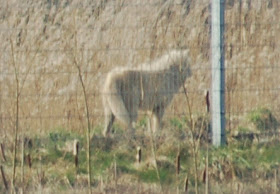 |
| woodruff, Lisbjerg |
Asperula odorata
(Galium odoratum)
The woodruff with the fragile stalks and with 6-8 leaves in each ring has in May-June a tassel of white flowers in the top. The fruits are coated with hook-curved brushes, which help disperse them by sticking temporarily to clothing and animal fur. The plant is common in humus forest floor. The dried plant is very fragrant. It is ideal as a groundcover or border accent in woody, acidic gardens where other shade plants fail to thrive. Deer avoid eating it.
Woodruff is native to Europe, North Africa and Western Asia. Its names include woodruff, sweet woodruff, wild baby's breath and master of the woods. It is sometimes confused with Galium triflorum and Galium verum.
(The common Danish name is skovmærke eller bukkar).
The plant owes its sweet smell to the odiferous agent coumarin and is sometimes used as a flavouring agent due to its contents of this chemical .This scent increases on wilting and then persists on drying, and the dried plant is used in pot-pourri and as a moth deterrent. It is also used to flavour May-wine (called "Maibowle" in German), syrup for beer, brandy, sausages, jelly, jam, ice cream and herbal tea. High doses can cause headaches, due to the toxicity of coumarin.
 |
| Lisbjerg skov in May |
1700-1800s: When the woodruff was in flower, the schoolteacher went out in the forest with the children to pluck woodruff and bind pretty garlands which were hung in the school room, spreading a wonderful scent all through summer.
Young girls went to the forest on Whit Monday to make bride garlands from woodruff and other flowers - and a girl crowned the guy whom she chose as her whitsun-bridegroom.
Around the 1870s the garlands were an important sales product on the markets and the city squares, where many "garland-women" were selling from big baskets, filled with garlands. Poor women and children went to the forest to pluck woodruff and were sitting all night binding garlands, and at dawn they went to the nearest town to sell them. The custom was widespread up till 1954.
1900s: From a big farm at Zealand all women went out each spring to pluck woodruff. The lady of the house made a garland of a thin hazel branch,wound with moss, and bouquets were bound upon the hazel-ring. Each year they made two or three such garlands, and the lady's husband had one which he used as a barometer.
Common Use:
 |
| Lisbjerg skov in May |
A fine dried bouquet decorated a vase in winter, or was bound with a golden band to decorate a photo of a dear friend or a deceased.
It was a common use to put bouquets of woodruff among clothes and furs in closets and drawers. The strong scent was meant to drive moths away and bring a fine perfume to the clothes and their owners. The girls put woodruff among their clean linen. The dried plant was also used for smoking away bad smell in the room.
Woodruff mixed with other dried leaves makes a good tea. In times with a lack of tobacco dried woodruff was used like tobacco.
Superstition/Omen:
The dried woodruff garland was used as a barometer. If the smell grew very strong in summer it meant that rain was on its way. It was dangerous to the health to have a woodruff garland in the bedroom.
The woodruff had to be plucked on Maundy Thursday, then it would give a beautiful scent all year. At least it had to be plucked before 1. May, since the witches were pissing on them after Walpurgisnight - and then the woodruff would lose its fine scent.
Wine:
People put woodruff in wine to make it tasty. It was put on snaps for a liqueur, and an essence from the plant was part of an angostura. The fresh shots put on snaps gave it the scent from the plant and a chartreusegreen colour. A handfull woodruff was put in a bottle of dry white wine with 100 g dissolved sugar; after the quarter of an hour the plants were strained - and it was said that this May-drink tasted heavenly.
 |
| Lisbjerg Skov in May |
Folk Medicine
Harpestreng ab. 1300: strengthens the stomach and the liver; the juice cleanses the body for scab and blisters.
Henrik Smid 1546: put in a wine extract in May refreshes the heart and the bad liver. Women bathed their childrens' rash with tea from the plant. Tired feet were relieved by footbath in a decoction.
1700s: The herb was listed in the Pharmacopoeia in 1772. The juice was described as stomach tonic.
It was known as an old "house remedy" to cook dried woodruff together with unsalted butter into an ointment to be used upon stroke- and flesh wounds, old wounds, scab, frost, the cow's sore udder, chapped tits and festered fingers.
1800s: a garland of woodruff placed by the woman in childbirth eased the birth. A hot footbath in a decoction of the plant drew the blood from the head. It was also used against toothache.
Woodruff was an ingrediense in a piece of advice for dog bites.
When the cows were grazing in the forest they had a decoction of the dried woodruff garland, which protected them against blood piss from eating certain plants in the forest.
Green or dried woodruff was given to dogs against rabies.
Source: V.J. Brøndegaard, "folk og flora", Dansk Etnobotanik, bd. 4, Rosenkilde og Bagger 1979.
photo May 2008 in Lisbjerg skov Aarhus : grethe bachmann
















